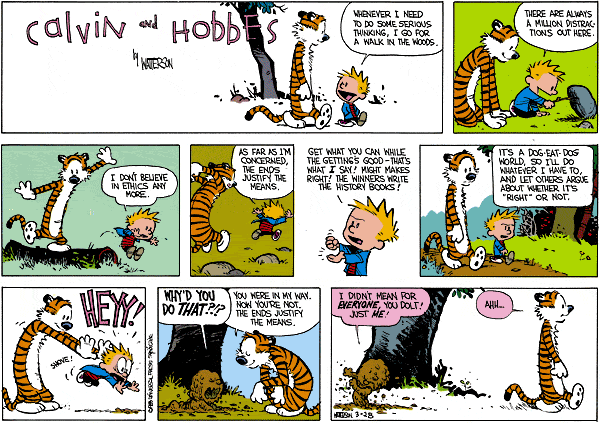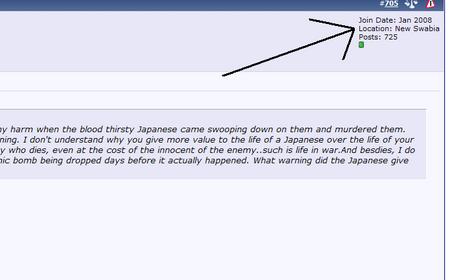Unclear - the Tokyo firebomb raid probably caused more deaths than the atomic bombings, but the political effects were not as strong and US casualties/costs were higher (neglecting the cost of the Manhattan Project).
Call them combatants if you want, but they were minding their own business doing no one any harm when the blood thirsty Japanese came swooping down on them and murdered them. Calling those innocent young American boys combatants does not justify them dying or drowning. I don’t understand why you give more value to the life of a Japanese over the life of your country man. In war people die and unfortunately, very unfortunately, it has to be the enemy who dies, even at the cost of the innocent of the enemy…such is life in war.And besdies, I do recall that the Americans dropped tons of flyers written in Japanese that warned of the atomic bomb being dropped days before it actually happened. What warning did the Japanese give when they bombed young innocent Americans at Pearl?.None!Long Live America:)
If you are referring to Dec. 7th, there was no declaration of war before the attack, so Navy personnel were not combatants, The original Japanese idea was to deliver the declaration just prior to the attack, making it an act of war.As it turned out, they were quite late, and Washington knew of the attack when the Japanese delegation arrived to play their trick. So, The attack was not covered by the conventions of the time, and was simply a large scale act of murder. This topic has been covered before in a number of other posts, and I personally feel this subject to be as talked over as can be, nothing more or new can be said about it. It would suit me fine if Admin would close this thread.
Well, before our administrator closes this thread, allow me just an additional, indeed final post, honorable ladies and gentlemen. It is sufficiently expressive, therefore no other explanation is needed.

Realativity of Ethics
In the meantime, honorable ladies and gentlemen, you will excuse me for a certain period. You see, I have to refresh my academic knowledge about organic chemistry. For some unknown reasons I have a peculiar in-bone feeling that those old matter-of-facts oriented chapters about certain highly intriguing attributes of the Phosphonofluoridic acid will be needed in the near future. After all, my old mentor - Dr. Merkwürdigliebe – always believed that I am strongly inclined toward unproductive throwing away my time.:roll:
In the meantime, as always – all the best.
Um, super-American patriot! Aren’t we from Canada? Belated happy Canada Day BTW…
Yes the Japanese started the War at Pearl Harbor (or by invading China in 1931, take your pick). But those young, innocent men at Pearl knew their job description, which included at least the possibility of being bombed.
And I will not be the one to close this thread as I think it is a healthy discussion and one that I feel torn with personally…
Agreed. We may randomly delete Herman’s posts where they are spectacularly stupid (on the off-chance it is contagious and someone else catches it), but that’s about it.
I never said I was American.

and they considered dropping flyers but they didnt. Said so in an exhibit in the Hiroshima Peace Museum.
and some historians say that Roosvelt knew of an attack on the Pacific fleet somewere (some sources say Pearl Harbour) but wanted a war with japan so he did not act on the Intel.
they’re wrong major. leaflets were dropped all over Japan after the Hiroshima bomb. on aug 6. the documents, translated into english, are at the Truman library in Independence, MO. they warned all civilians to leave their cities at once. there here. scroll down to August -“Translation of leaflet dropped on the Japanese (AB-11), August 6” [link](http://www.trumanlibrary.org/whistlestop/study_collections/bomb/large/index.php)
Um, no actual historians say this. It’s conspiracy crap. The US knew an attack was likely in the outer Pacific, but no one believed the Japanese capable, let alone audacious enough, to attack Pearl harbor…
plus Pearl was to shallow for a torpedo attack. only about 45 feet. a torpedo dropped to 65 feel before leveling off. but the Japs invented a wooden fin assembly that made them drop much more shallow. got a hand it to them. innovation.
My bad. must have missread a history book. (I could swear it was on Dont Know Much About History)
I beleive the modification enabling air-torpedoes to be launched in shallow harbor waters was a BRITISH modification first copied by the Japanese.
Brits used this in the TARANTO raid, an attack studied in considerableby detail by the IJN whilst planning for Pearl.
Correct.
But the Japanese failed, despite having over a year to work it out from the Taranto evidence, to grasp that in a shallow harbour the best they could achieve was grounding most ships, which in time would go back into service.
Japan’s carefully designed and loaded shallow water torpedoes at Pearl tend to torpedo the claim that Japan was unlucky in not being able to hit the USN ships in deeper water anchorages.
The Japanese executed a clever and lucky raid which Blind Freddie could see wasn’t going to do much more than ground the biggest ships and seriously piss off the Americans without doing much more than delaying the inevitable American response.
During the weeks following the Japanese raid, a great deal of repair work was done by the Pearl Harbor Navy Yard, assisted by tenders and ships’ crewmen. These efforts, lasting into February 1942, put the battleships Pennsylvania, Maryland, and Tennessee; cruisers Honolulu, Helena, and Raleigh; destroyers Helm and Shaw, seaplane tender Curtiss, repair ship Vestal and the floating drydock YFD-2 back into service, or at least got them ready to steam to the mainland for final repairs. The most seriously damaged of these ships, Raleigh and Shaw, were returned to active duty by mid-1942.
Five more battleships, two destroyers, a target ship and a minelayer were sunk, or so severely damaged as to represent nearly total losses. These required much more extensive work just to get them to a point where repairs could begin. Starting in December 1941 and continuing into February 1942, the Navy Yard stripped the destroyers Cassin and Downes of servicible weapons, machinery and equipment. This materiel was sent to California, where it was installed in new hulls. These two ships came back into the fleet in late 1943 and early 1944.
To work on the remaining seven ships, all of them sunk, a salvage organization was formally established a week after the raid to begin what would clearly be a huge job. Commanded from early January 1942 by Captain Homer N. Wallin, previously a member of the Battle Force Staff, this Salvage Division labored hard and productively for over two years to refloat five ships and remove weapons and equipment from the other two. Among its accomplishments were the refloating of the battleships Nevada in February 1942, California in March, and West Virginia in June, plus the minelayer Oglala during April-July 1942. After extensive shipyard repairs, these four ships were placed back in the active fleet in time to help defeat Japan. The Salvage Division also righted and refloated the capsized battleship Oklahoma, partially righted the capsized target ship Utah and recovered materiel from the wreck of the battleship Arizona. However, these three ships were not returned to service, and the hulls of the last two remain in Pearl Harbor to this day.
All this represented one of history’s greatest salvage jobs. Seeing it to completion required that Navy and civilian divers spend about 20,000 hours underwater in about 5000 dives. Long and exhausting efforts were expended in recovering human remains, documents, ammunition and other items from the oil-fouled interiors of ships that had been under water for months. Uncounted hours went into cleaning the ships and otherwise getting them ready for shipyard repair. Much of this work had to be carried out in gas masks, to guard against the ever-present risk of toxic gasses, and nearly all of it was extremely dirty.
http://www.history.navy.mil/photos/events/wwii-pac/pearlhbr/ph-salv.htm
so the harbor in toronto was about the same depth as pearl harbor???
Taranto (Italy), not Toronto (Canada). And the water at Taranto was ~40ft deep, so a whisker shallower than at Pearl Harbour.
I’m not trying to beat you up and the history book you have is recycling a common theory: that Roosevelt was aware of an impending Japanese attack and did nothing purposely in order to shock the last vestiges of “isolationism” out of the American public so they would be prepared to spill blood against the Axis.
I do realize that this is a conspiracy theory that is circulated. But, it’s a conspiracy theory that makes absolutely zero sense to me. If FDR and the Pentagon are aware of an impending Japanese attack on Pearl, they’re putting the forces on alert. A Japanese attack is a Japanese attack whether US personnel are ready for it or not. The US public is still outraged. And a coup de grâce is possible if the US is able to mount a counterstrike against the Japanese carrier task force…
Roosevelt expected – and had warned U.S. forces in the Pacific – that the Japanese might well attack U.S. because of the oil embargo in late November or early December, 1941, but at Clark Field and/or Subic Bay in the Philippines. Probably never thought that the Japanese would [or could] come all the way to Hawaii to wipe out the U.S. Pacific Fleet. And in their worst nightmares, Roosevelt and Churchill never imagined that the Japanese could then actually invade and quickly conquer Singapore and the Philippines, as they proceeded to do.
Has anyone read conspiracy books like Tollands, etc?
The depth of the Toronto Harbour is very deep. .It’s average depth is 283 ft. / 86 m and max depth is 802 ft. / 244 m. There are no torpedoes in my harbour and the water is cold and murky. I don’t think Canada even has a submarine…as we know the Americans will protect us anyways 
